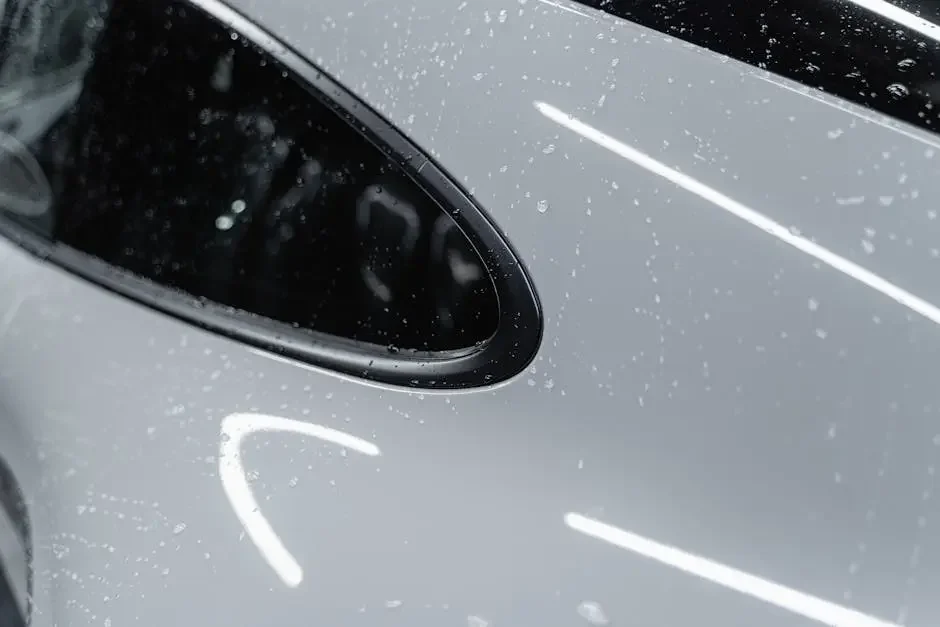How Do I Remove Water Spots from My Car's Paint?
Water spots on your car's paint can be frustrating, but fear not! With a few simple steps, you can restore that glossy finish and make your vehicle look as good as new. In this guide, we'll walk you through the effective techniques for water spot removal.
Identify the Type of Water Spots
Before you start cleaning, determine if the spots are mineral deposits from hard water or something else, as this will influence your cleaning method.
Most commonly, water spots are left behind from hard water, which contains excess minerals. However, spots can also result from bird droppings, tree sap, or other contaminants.
To effectively identify these spots, closely inspect them. Hard water spots often have a chalky appearance, whereas organic materials might be darker or even sticky. Recognizing this early on can save you time and frustration during the cleaning process.
Gather the Right Supplies
You'll need items like distilled water, a soft microfiber cloth, a good quality car soap, and possibly a detailing spray or polish specifically designed for water spot removal.
In addition to these basics, consider having a clay bar on hand. It can help to further remove any embedded contaminants that a simple wash might miss. Having the right tools is essential for effective water spot removal.
Also, don't forget gloves! While most cleaning products are safe, it's always good to protect your skin when working with chemicals. Prepare your workspace, ensuring it's well-lit and provides ample room to maneuver around your vehicle.
Wash Your Car Thoroughly
Begin by washing your car to remove any dirt or grime, which will help prevent scratching while you tackle the water spots.
Use a quality car soap mixed with warm water, as this will effectively break down contaminants. Rinse your car thoroughly, ensuring no soap residue is left behind to avoid further complications.
While washing, pay extra attention to areas that are often overlooked, like around the wheel rims and under the bumpers. Cleaning these spots ensures a clearer canvas when you start with the water spot removal techniques.
Once you’ve finished washing, dry the car immediately with a microfiber towel. This not only helps to prevent more water spots from forming after the wash but also allows you to see any spots that might need extra attention.
Apply the Water Spot Removal Technique
Use a mixture of distilled water and your chosen cleaning product, applying it gently to the affected areas with a microfiber cloth. Follow up with buffing to restore shine.
It’s best to work in sections. Applying the solution to a small area at a time will allow you to focus and ensure thorough cleaning. After letting it sit for a minute, use a clean cloth to buff the area.
Make sure not to scrub too hard! Applying too much pressure can damage the paint. Instead, use gentle, circular motions. If the water spots are stubborn, repeat the process until they're gone.
After each section, step back and assess your work. This will help you spot areas that may need additional attention before moving on.
Protect Your Car's Paint
Once you've removed the water spots, consider applying a wax or sealant to protect your paint from future water spots and environmental damage.
A good quality wax will not only enhance the shine but also create a protective barrier against elements like rain, dirt, and road grime. Think of it as an insurance policy for your car's exterior!
Investing in a ceramic coating is another excellent option for long-lasting protection. This advanced treatment can provide superior durability and shine, making your car easier to maintain moving forward.
Routine maintenance, like washing and waxing, will keep your car looking good and reduce the chances of water spots appearing in the future. Stay proactive rather than reactive when it comes to preserving that beautiful finish.
Final Thoughts on Water Spot Removal
By following these steps, you can easily get rid of those pesky water spots and keep your car's paint looking pristine. Regular maintenance and the right products will help prevent future water spots too! Happy cleaning!

